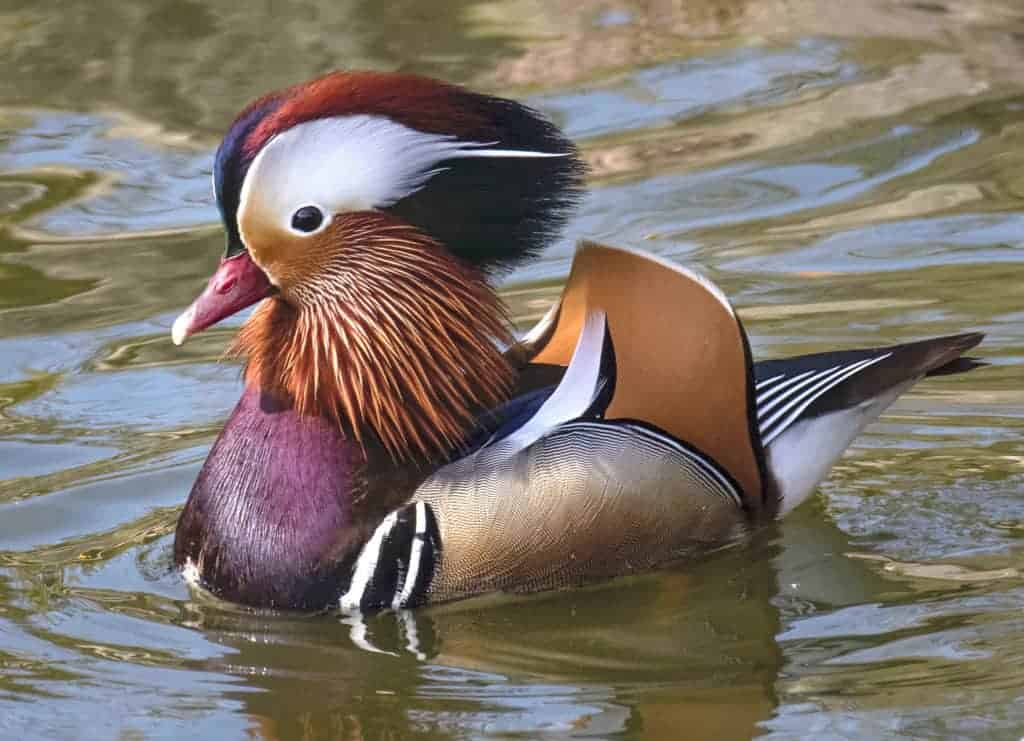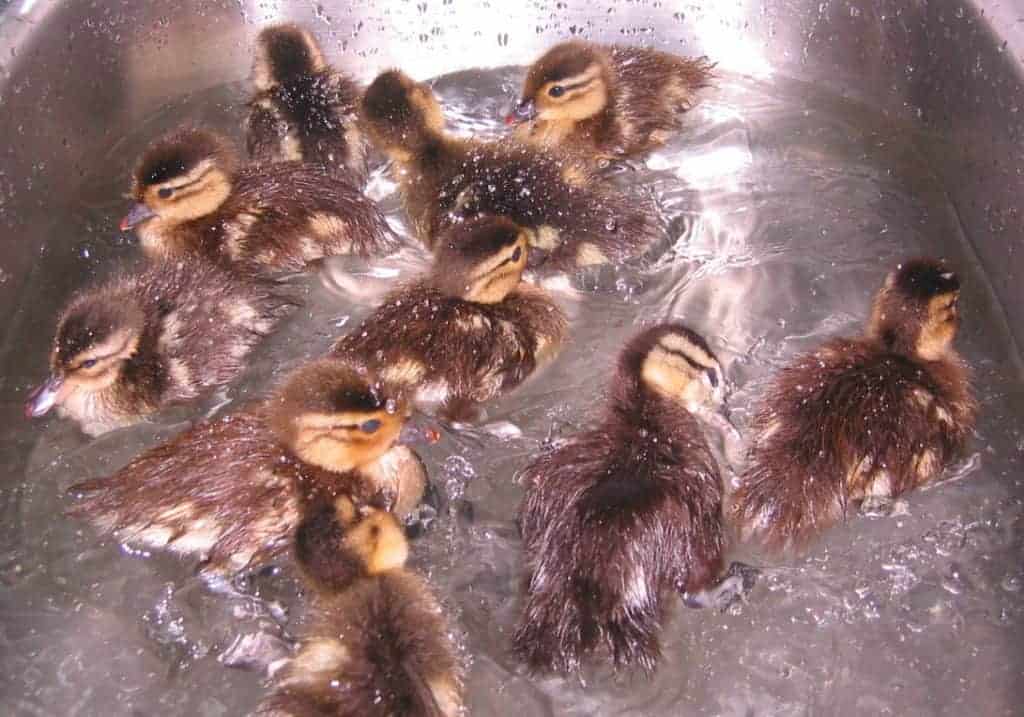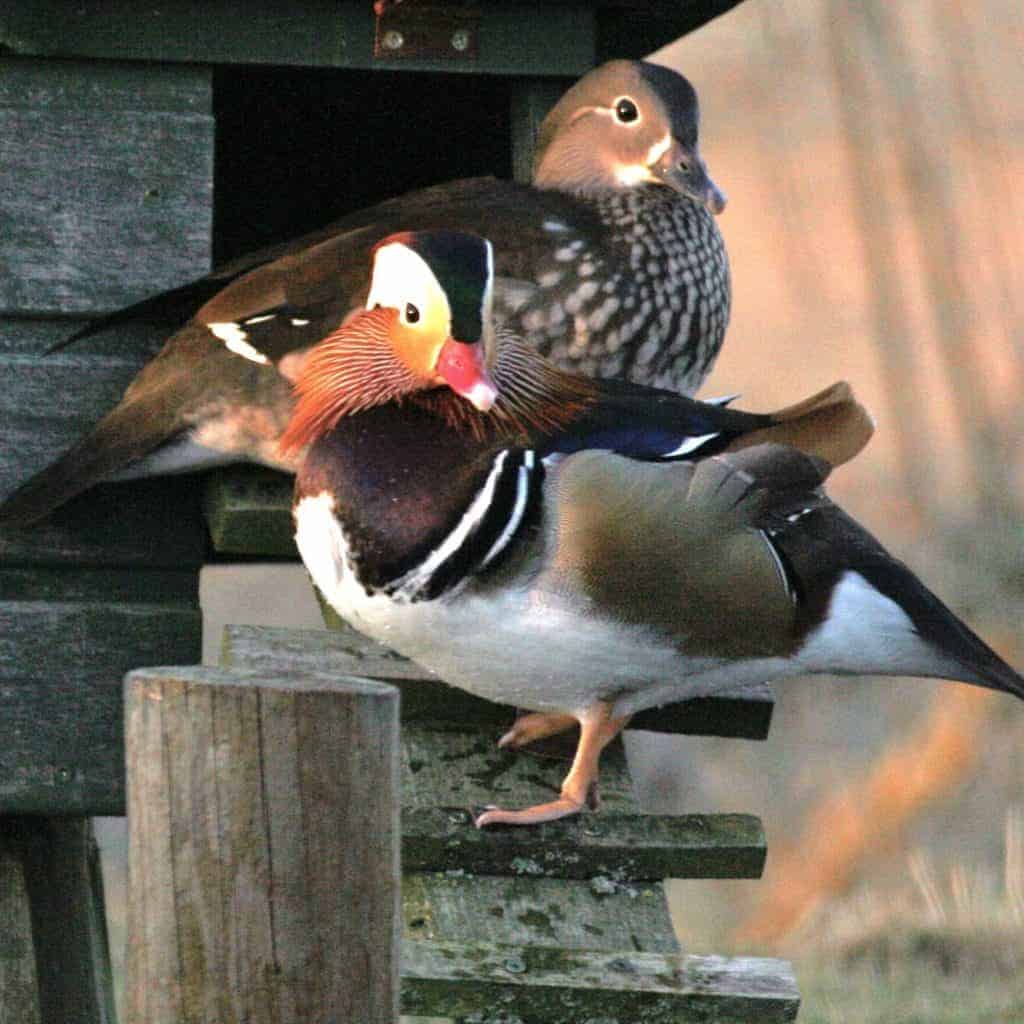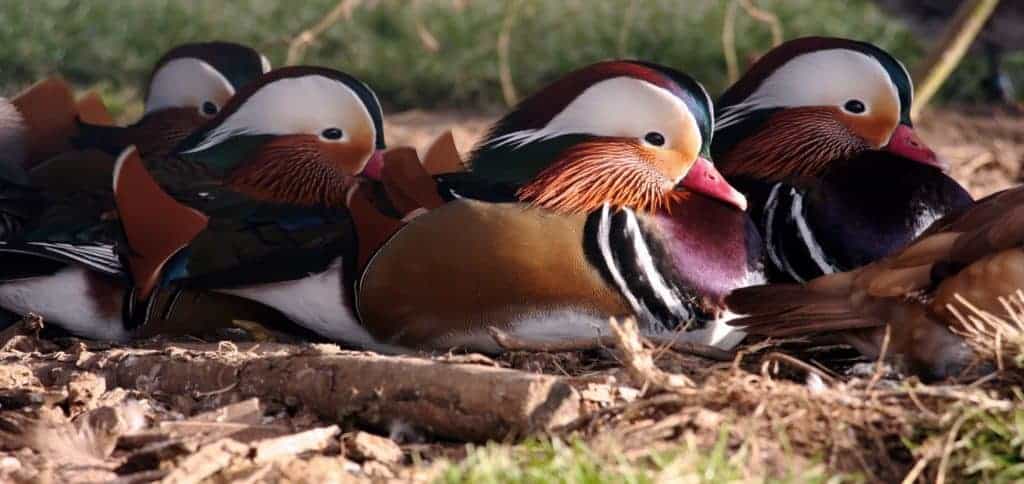Mandarin Duck

Their natural habitat is mature deciduous woodland or parkland with quiet pools and streams. Their preference is for woodland suitable for perching on lower branches.

Specimens frequently escape from collections, and in the 20th century, a large feral population was established in the UK. The Mandarin is included on the UK list of bird species. Unlike many other introduced species, the Mandarin does not appear to interfere with our native fauna unduly. However, we must emphasise here that non-native species should not be released into the wild. The Wildlife and Countryside Act 1981 is the primary legislation which protects animals, plants and habitats in the UK.
Aix galericulata
Mandarin are among the most popular wildfowl in collections throughout the world for both their ornamental appearance and their charm. Their native range is SE Siberia, Korea, E China and Japan. Particularly in Japan, Mandarin can still be seen in village streams and on temple ponds. They symbolise love and fidelity. In reality, the pair bond only lasts until the end of incubation, or rarely, early brood-rearing. The female rears the young.
Mandarins are lively and active ducks at all times, but the drake is at its best in his elaborate courtship display. The Mandarin drake has a weak whistle whilst the duck has a soft quack.


In the wild, Mandarins usually nest in trees, lining the hollow with down, whilst in captivity they are happy to use raised nesting boxes. For the entrance hole, a horizontal oval 100 x 75mm is about right. If there is a branch or small platform nearby, the drake will stand guard for a while, giving a good clue that the nest is occupied.
The clutch size is 9-12 eggs, which the female incubates for 28-30 days.
Download a colouring page here.
Share this page